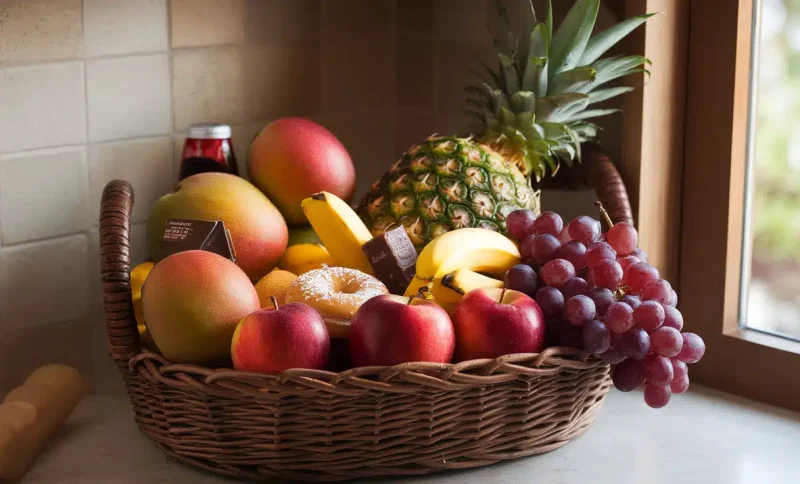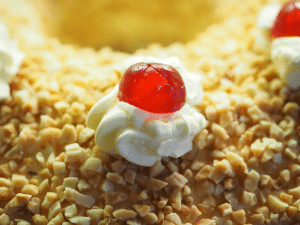Sweet Deception: The Hidden Sugar in Your Daily Menu Ever wonder why that “healthy” granola bar leaves you crashing an hour later?
The culprit might be sucrose, a sneaky double sugar composed of glucose and fructose that lurks in more places than you’d imagine.
From your morning orange juice to that innocent-looking balsamic glaze, sucrose is everywhere, silently sabotaging your energy levels and health goals.
Did you know that your body processes the fructose in sucrose differently than other sugars, sending it straight to your liver, where it can trigger fat storage.
Ready to outsmart the sweet saboteur? Let’s decode which foods are secretly loaded with sucrose and uncover smarter swaps that won’t spike your blood sugar. Knowledge is your most effective defense against sugar’s stealthy attack.
Understanding Sucrose
Sucrose is nature’s original energy booster, naturally occurring in sugar beets, sugar cane, and fruits like pineapples and oranges, but that’s where the innocence ends.
Food manufacturers discovered sucrose’s triple threat: it preserves shelf life, enhances flavor, and triggers our brain’s reward center, making us crave more.
The result? It’s now pumped into everything from ketchup to “healthy” yogurts.
When consumed excessively, sucrose becomes a metabolic villain, driving weight gain, feeding harmful bacteria in your mouth, and creating blood sugar roller coasters that leave you tired and hungry.
The difference between an apple’s natural sucrose and a soda’s added sucrose? Context matters, and your body knows the difference.
Natural Foods High in Sucrose
Nature’s candy comes with a hidden price tag; even the most wholesome fruits and vegetables can pack surprising amounts of sucrose.
Fruits
Mother Nature’s sweetest creations are also her biggest contributors to sucrose.
These colorful powerhouses deliver essential nutrients, but their natural sugar content can add up quickly, especially when you’re reaching for that second helping of tropical paradise.
High-Sucrose Fruits (per 100g)
- Mangoes: 11.5g – The tropical king of sweetness
- Pineapples: 9.9g – Tangy yet surprisingly sugary
- Cantaloupe: 7.7g – Summer’s hydrating sugar bomb
- Apples: 3.7g – Not so innocent after all
- Bananas: 3.6g – Your pre-workout fuel with a catch
- Grapes: 2.6g – Nature’s bite-sized candy
Vegetables
Plot twist: some of your favorite “healthy” vegetables are secretly sweet saboteurs.
These earthy gems prove that sucrose isn’t just hiding in desserts; it’s also camouflaged in your salad bowl and side dishes.
Notable Sucrose-Containing Vegetables (per 100g):
- Beets: 6.8g – The ruby-red sugar surprise
- Carrots: 5.0g – Crunchy sweetness in disguise
- Sweet Corn: 3.2g – Summer’s golden sugar kernels
Remember, it’s not about perfect restriction, it’s about informed choices that keep your energy steady and your taste buds satisfied.
Processed Foods High in Sucrose
Welcome to the sugar minefield of modern eating! These processed culprits pack more sucrose punch than most people realize, turning innocent meals into sugar festivals that send your blood glucose on a wild roller coaster ride.
1. Baked Goods and Desserts
The dessert aisle is essentially a sucrose wonderland disguised as treats. That innocent slice of chocolate cake delivers a whopping 50g of sucrose, equivalent to 12 teaspoons of pure sugar!
Your favorite cookies aren’t much better at 20g per two-piece serving, while a single donut clocks in at 15g.
These sweet saboteurs don’t just satisfy cravings; they trigger massive insulin spikes that leave you hungrier than before you indulged.
2. Beverages
Excessive consumption of liquid sugar can lead to sucrose overload, which can override the signals that indicate fullness.
A 12-ounce soda contains 39g of sucrose, almost 10 teaspoons. Even “healthy” fruit juices contain 24 grams of sugar per 8-ounce glass, while sweetened teas offer 33 grams of sugar.
These beverages deliver concentrated sucrose directly to your bloodstream, creating instant energy spikes followed by devastating crashes.
3. Condiments and Sauces
The sneakiest sources of sucrose hide in plain sight on your dinner table. That innocent tablespoon of ketchup adds 4g of hidden sugar to your meal.
Just two tablespoons of barbecue sauce add 12g, turning healthy grilled chicken into a sugar-glazed indulgence.
Even salad dressings, marketed as healthy, contain 7g of sucrose per two-tablespoon serving, changing virtuous greens into a dessert in disguise.
Hidden Sources of Sucrose
Think you’re eating healthy? These “innocent” foods are sugar bombs in disguise. Brace yourself for some shocking revelations about your favorite “wholesome” choices.
- Breakfast Cereals: That “heart-healthy” bowl packs 20g sucrose – more than candy
- Granola Bars: Your portable protein fix secretly harbors 15-20g of hidden sucrose
- Flavored Yogurts: Greek or regular, these creamy treats sneak in 20 g+ sucrose bombs
- Fruit Juices: “100% natural” orange juice delivers 21g sucrose per glass – ouch
- Pasta Sauces: Marinara masks 12g sucrose per half-cup serving behind tomatoes
Your grocery cart has just become a detective mission – read labels as if your health depends on it. Knowledge is power, and now you’re armed to make truly informed food choices.
Note: Always check ingredient labels – sucrose hides under names like “cane sugar,” “raw sugar,” and “evaporated cane juice.”
Managing Sucrose Intake
Become a sugar detective by scrutinizing ingredient lists, sucrose hides behind aliases like “cane sugar,” “invert sugar,” and “golden syrup.”
Change your sweet tooth with nature’s candy: fresh berries, dates, or a sprinkle of stevia can satisfy cravings without the metabolic chaos.
The golden rule? Practice the 80/20 approach, make smart choices 80% of the time, then enjoy your favorite high-sucrose treats guilt-free for the remaining 20%.
Remember, it’s not about perfection; it’s about progress. Small swaps today lead to a sweeter health tomorrow.
Wrapping It Up
Your Sweet Victory Starts Now. Guiding the maze of foods with sucrose doesn’t have to feel overwhelming; it’s actually your superpower for reclaiming control over your health.
From sneaky condiments to “healthy” snacks, sucrose hides in plain sight, but now you’re armed with the knowledge to spot it everywhere.
The difference between feeling energized and experiencing that dreaded sugar crash often comes down to reading labels and making smarter swaps.
Remember, small changes can lead to massive conversions. Choosing fresh fruit over fruit snacks or sparkling water with lemon instead of soda can revolutionize how you feel daily. Ready to take the next step?
Tell us in the comments: which high-sucrose food surprised you most, and what’s your go-to healthy alternative?



















